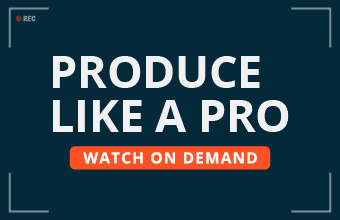Growing on Instagram in 2025 will require more than just creativity. Sure, creativity helps you stand out, but without understanding the data behind your posts, you might be missing out on significant engagement and reach.
That’s where Instagram Analytics comes in. By consistently analyzing how your content performs, you can fine-tune your strategy, boost your visibility, and drive better results.
Ready to take your Instagram game to the next level? Let’s dive into everything you need to know about Instagram Analytics in 2025!
Understanding Instagram Analytics
First and foremost, let’s understand what the term “Instagram Analytics” means.
Instagram Analytics refers to the data that helps you understand more about content performance. With analytics, you can get deep insights into audience behavior, content engagement, and profile performance, which further lets you make data-driven decisions.
With Instagram Analytics, you can track metrics like:
- Post reach
- Impressions
- Engagement rate
- Follower demographics
- Profile views
These insights are essential for refining your Instagram strategy and ensuring that your content resonates with your audience.
Why Instagram Analytics is Crucial for Your Marketing Strategy
As of 2024, Instagram has over 2 billion monthly active users and over 200 million active businesses! That’s just about how big the consumer and creator pool is and it is constantly expanding further.
As such, you can’t simply rely on creativity to get the best out of your Instagram marketing efforts. You also need to understand how the content performs and how your audience engages with it.
Here’s why Instagram Analytics will be more important than ever in 2025:
- Optimize content strategy: Analytics helps you understand what content works best and lets you focus on posts that get higher engagement.
- Understand audience behavior: Knowing when your followers are most active and the types of posts they interact with lets you tailor your content accordingly.
- Measure ROI: Analytics help measure the return on investment (ROI) of your campaigns, showing which strategies are delivering results.
- Track progress over time: Monitoring metrics allow you to measure your account’s growth, spot trends, and adjust your strategies for long-term success.
Key Instagram Metrics You Should Track
To understand Instagram Analytics further, you need to know about the right metrics to track. These can vary from one brand to another. For example, if your goal is social visibility, you must focus on impressions and reach. Similarly, if you’re focusing on conversion, engagement is a key factor.
So, you’ll need to pick metrics that work well for your business. Here are some key metrics you can benefit from:
1) Follower Growth Rate
It’s not enough to look at your follower count. Instead, track your follower growth rate—the speed at which your audience grows over time. This metric helps you measure the success of campaigns or content strategies that aim to increase your reach.
Example: If your follower growth spiked after a product launch post, you’ll know that’s the kind of content that resonates with your audience.
Actionable Insight: Regularly check your growth rate to spot trends. Slow growth could mean your content isn’t hitting the mark, so try experimenting with new types of posts.
2) Impressions vs. Reach
- Impressions show how many times your content was viewed.
- Reach shows how many unique users saw your post.
Tracking both helps you understand how widely your content is being distributed and whether it’s reaching new audiences.
Example: A high number of impressions but low reach could indicate that only your existing followers are seeing your content, limiting your exposure to new audiences.
Actionable Insight: If your reach is low, consider boosting posts or using hashtags that target a broader audience.
3) Engagement Rate
Your engagement rate measures the number of interactions (likes, comments, shares, and saves) relative to your total followers. It’s a key indicator of how well your content is connecting with your audience.
Example: If a Reel receives a high engagement rate compared to your other posts, you’ll know that short-form videos are your strength.
Actionable Insight: Focus on replicating the content that drives the highest engagement to keep your audience interested.
4) Profile Views
This metric shows how many people visited your profile after seeing one of your posts or stories. A spike in profile views often means your content is generating curiosity and potentially gaining new followers.
Actionable Insight: Increase profile views by including strong calls-to-action (CTAs) in your posts, encouraging users to check out your profile.
5) Instagram Stories Metrics
Instagram Stories are highly engaging but disappear after 24 hours. Important metrics include:
- Taps forward: Users tap to skip to the next story.
- Taps back: Users tap to rewatch your story.
- Exits: Users leaving your story mid-way.
Actionable Insight: A high number of taps forward suggests users are losing interest. Experiment with shorter, more engaging stories to maintain attention.
How to Use Instagram Analytics to Improve Your Strategy
Once you’ve gathered insights, it is time to focus on improving your content strategy. Here’s how you can achieve that:
1) Identify Your Top-Performing Content
Look for trends in your top-performing posts to understand what works. For example, if carousel posts receive higher engagement than single-image posts, you’ll want to produce more carousels.
Actionable Insight: Replicate successful content types to keep your audience engaged and improve your overall reach.
2) Post at the Right Time
Instagram Analytics can tell you when your audience is most active. Use this data to post at peak times to maximize visibility and engagement.
Actionable Insight: Schedule posts during your audience’s peak hours for optimal engagement.
3) Analyze Your Audience
Understanding your audience demographics—such as their age, location, and interests—helps you tailor your content.
Example: If your data shows that most of your followers are in their twenties and interested in fashion, you can create more content around style tips.
Actionable Insight: Regularly adjust your content strategy to match your audience’s evolving interests and demographics.
Best Practices for Instagram Analytics in 2025
As Instagram continues to evolve, here are some best practices to follow in 2025 to stay on top of your analytics:
1) Track Data Consistently
Don’t wait for your quarterly review to check analytics. Regular tracking ensures you stay on top of trends and can pivot when necessary.
2) Set Clear Goals
Before diving into your analytics, set clear objectives, such as growing your follower count by 10% in three months or increasing your engagement rate by 5%.
3) Stay Updated on Instagram Features
Instagram is constantly evolving. Stay informed about new features, such as Reels, Shops, or the latest ad formats, and track their performance with your audience.
Making use of Instagram Analytics to keep your content strategy effective is not tough. But getting to the depths of these insights can be a tough task.
Instagram’s native analytics platform, Instagram Insights, offers all data in raw form. But analyzing and understanding this data can be a time-consuming task, especially if you’re managing multiple accounts at once.
That’s where an effective marketing analytics tool like Vaizle comes in. Vaizle not only provides actionable insights into your own account, but it also lets you benchmark your performance against competitors.
With Vaizle, you can:
- Monitor your follower growth rate and engagement.
- Get detailed reports on what content works best for your audience.
- Track competitor performance to stay ahead in your industry.
Actionable Insight: Using Vaizle can help you refine your strategy, boost engagement, and grow your audience faster than ever before.
PS: You can start by analyzing your Instagram page with Vaizle’s free Instagram Page Analysis tool first.
FAQs
1. What is the difference between reach and impressions?
Reach refers to the number of unique users who have seen your post, while impressions indicate the total number of times your post has been viewed, including multiple views by the same user.
2. How can I track Instagram Stories performance?
You can track Instagram Stories performance using Instagram Insights, which provides data on views, taps forward, taps back, and exits. For more in-depth analysis, third-party tools like Vaizle can help.
3. What is a good engagement rate on Instagram?
A good engagement rate depends on the size of your following. Generally, an engagement rate between 1-5% is considered good. For smaller accounts, rates over 5% are excellent.
4. How often should I check my Instagram analytics?
It’s a good practice to check your Instagram analytics weekly or monthly. This helps you stay on top of trends and make timely adjustments to your strategy.
5. Can I track competitor performance on Instagram?
Yes, many advanced analytics tools like Vaizle allow you to track competitor performance. You can compare key metrics such as engagement rates, follower growth, and content performance.







